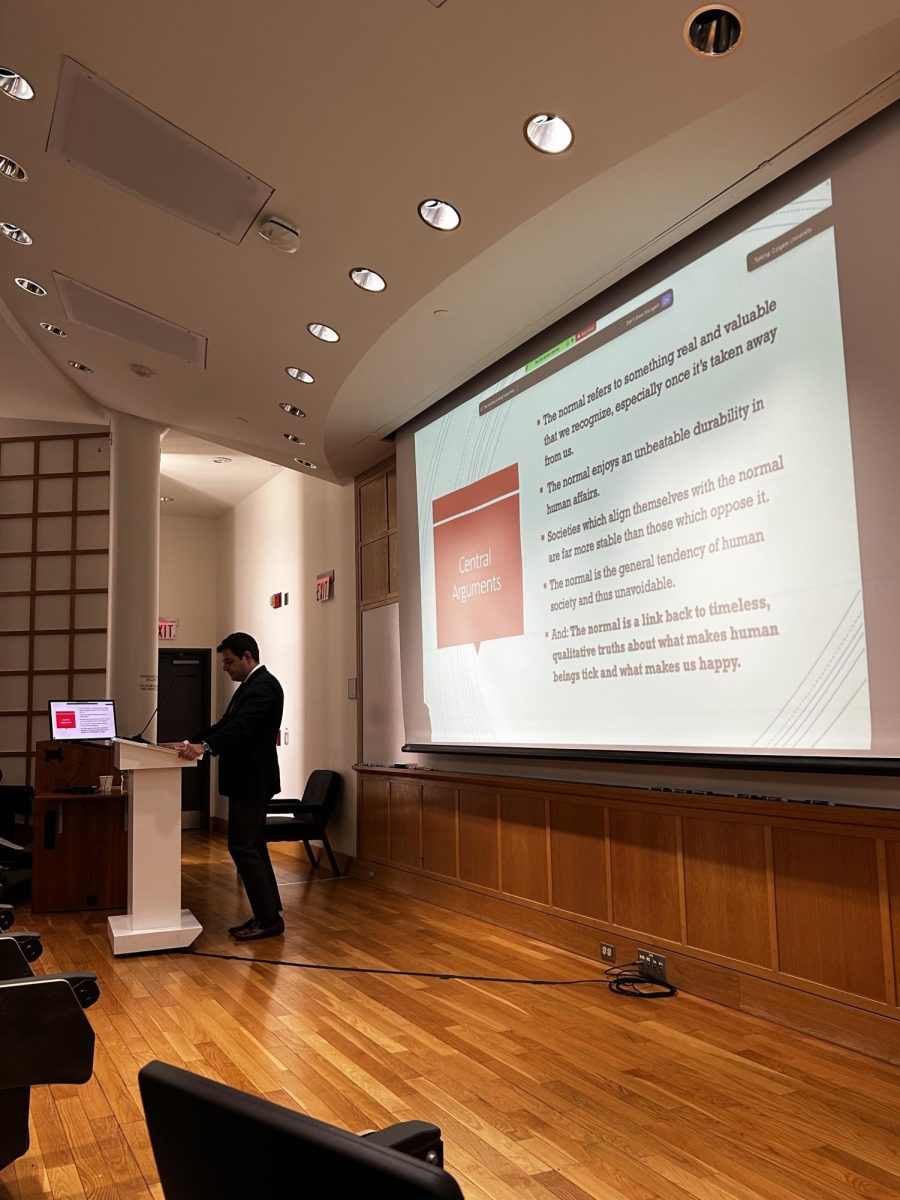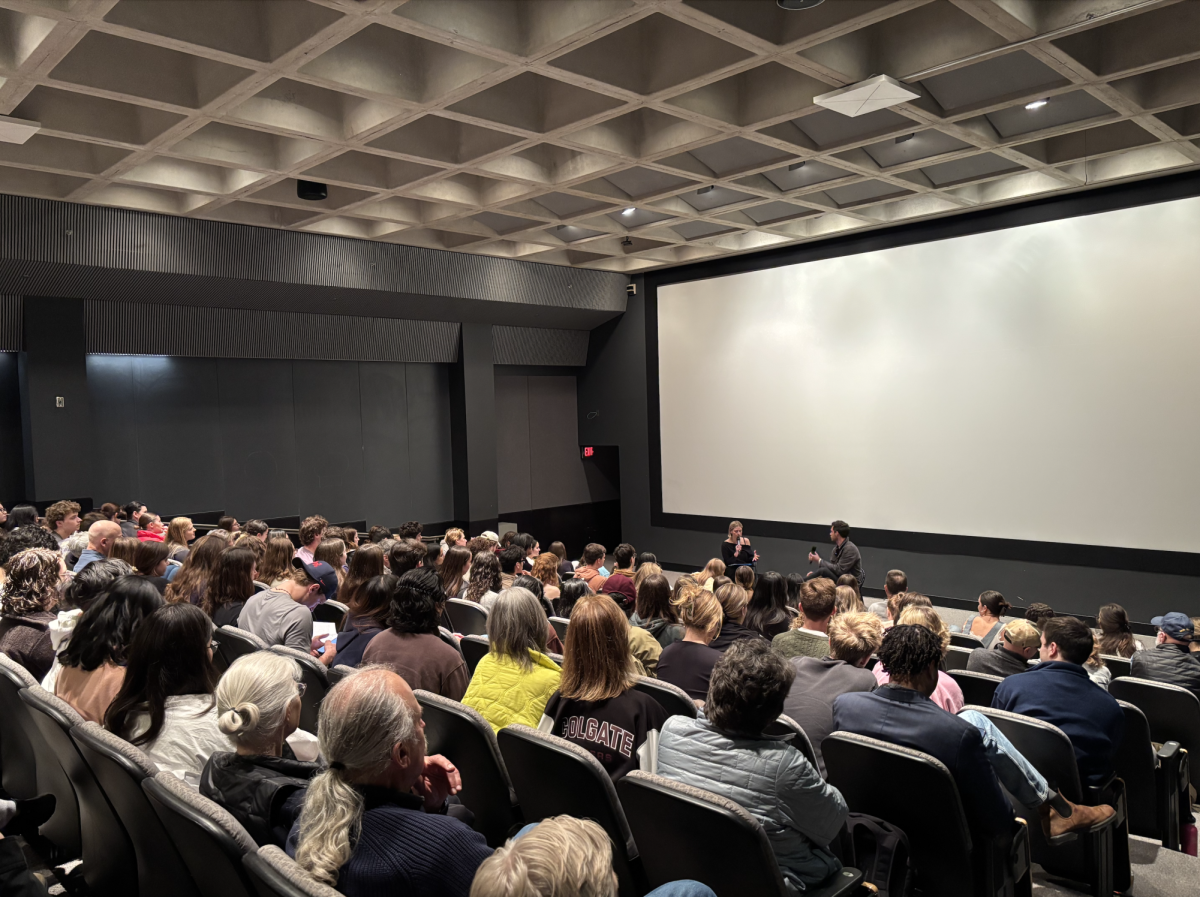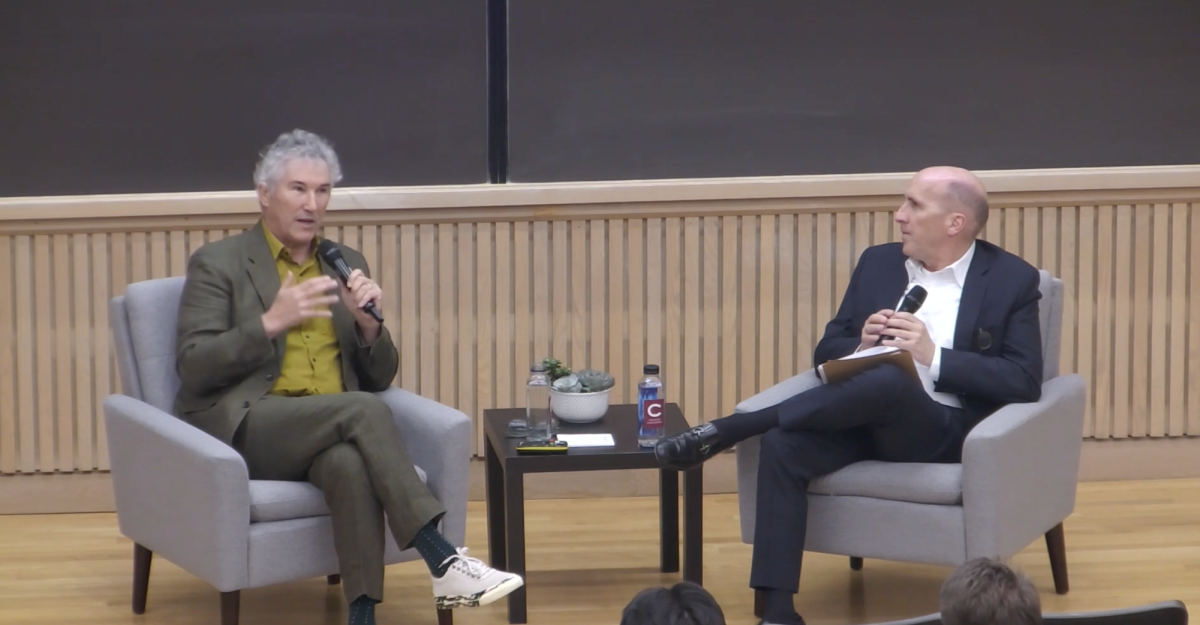Artist, author and lecturer Trevor Paglen visited Colgate University to speak on the intersection of government surveillance and art for his lecture “You’ve Just Been F*cked by Psyops: How Mind Control, UFOs, Magic, and Electronic Warfare Explain the Future of AI and Media” on Thursday, Sept. 26. Paglen’s talk touched on subjects of international relations, governmental ethics, computer science, artistic expression and, of course, magic and deception.
Paglen began his lecture by stating that his goal as an artist was to capture the aspects of the world that are specific to our time.
“People want a lot of different things out of art. What I want out of art is things that help us see the world around us,” Paglen said. “When you are looking at the sky or looking at the ocean, you’re looking at a landscape that other artists have been looking at for hundreds if not tens of thousands of years. And what your job is, is to see what is different about that landscape now than it was in the past.”
Paglen concluded that the defining feature of our current society is the omnipresence of technology. Junior Jamie Kleinbord was specifically interested in this interplay between technology and art.
“I found the most interesting part of the lecture to be Paglen’s advocacy for technology and surveillance through art,” Kleinbord said. “His messages about the impending threat of AI to our security were particularly impactful when viewed through the lens of visual art.”
Paglen found that the psyoptic algorithms that various social media and advertising companies use represent the pinnacle of decades of governmental research into how to manipulate the human mind into believing or desiring certain things.
“One of these defining features of the present are these technical and technological infrastructures. But when we look at these kinds of technical infrastructures, we have to keep in mind that those infrastructures are not just there passively, they are also looking at us,” Paglen said. “You put a picture on Instagram, or a video on TikTok, a few of your friends might like it. But in the background, that image is being scrutinized by a legion of computer vision algorithms and artificial intelligence algorithms that are trying to learn as much about you and your relationships as possible.”
Paglen connected this recent phenomenon to decades of United States governmental programs dating back to the Cold War, which experimented with deception and psychological manipulation. The programs included staging UFO sightings, psychological experiments on humans with various drugs including LSD, the Project MK-Ultra human experimentation program and the invention of computer programs designed to simulate human consciousness.
“The CIA and the military had been working with what we might call the hyper-memetic qualities of the UFO stories since the 1950s, and they’d been using it for decades as a way to do psyops. The discovery of this hyper-meme happened in the context of a massive American military and intelligence effort to develop ways to manipulate people’s minds,” Paglen said. “This was part of a larger effort that involved mind control experiments, magic and illusionism, artificial intelligence and also electronic warfare.”
Kleinbord felt that Paglen’s exploration into past developments made contemporary events more easily understandable as phenomena.
“I thought his discussion about the history of psyops was necessary to show how technology has played a role in making government surveillance more covert,” Kleinbord said. “He drew important parallels to how present-day mass surveillance functions in manipulating and controlling public perception.”
Paglen concluded his story by stating that the implementation of effective deception required constant surveillance and due diligence on the state of the subjects that were being manipulated.
“You need to be able to get feedback on how well the techniques you are using are working: you need some kind of a sensor that can help you evolve the world you’re trying to create in the most effective direction. This program was sensibly closed in the 1960s, but it never really went away,” Paglen said.
Regarding how this bodes for our everyday lives, Paglen says advertising scientists and software designers utilize the research related to this period to enhance the desirability of their products to the populace. With reality being a concrete boundary between perception and the physical, it is an unsettling notion to find that half of reality may not be by one’s design.
First-year Lily Skoczen expressed concern about the consequences of this implication.
“It’s wild to think of [Project MK-Ultra], for example, as not just a singular tangent from the CIA but part of a larger trend of psychological research,” Skoczen said.
Paglen’s mindset ultimately seemed to reflect Skoczen’s own fears, as he expressed dismay about the idea that these kinds of psychological operations and technological manipulations are becoming increasingly mainstream and present in our everyday lives.
“This kind of cognitive warfare […] is not, of course, limited to the military and intelligence arenas, but we are entering a world where this idea of cognitive warfare becomes a standard part of marketing, sales, management, politics and society and culture at large,” Paglen said. “That gap between the world that’s out there and what we perceive can be filled with all sorts of prompt injections […] I’m not sure it ends well.”










